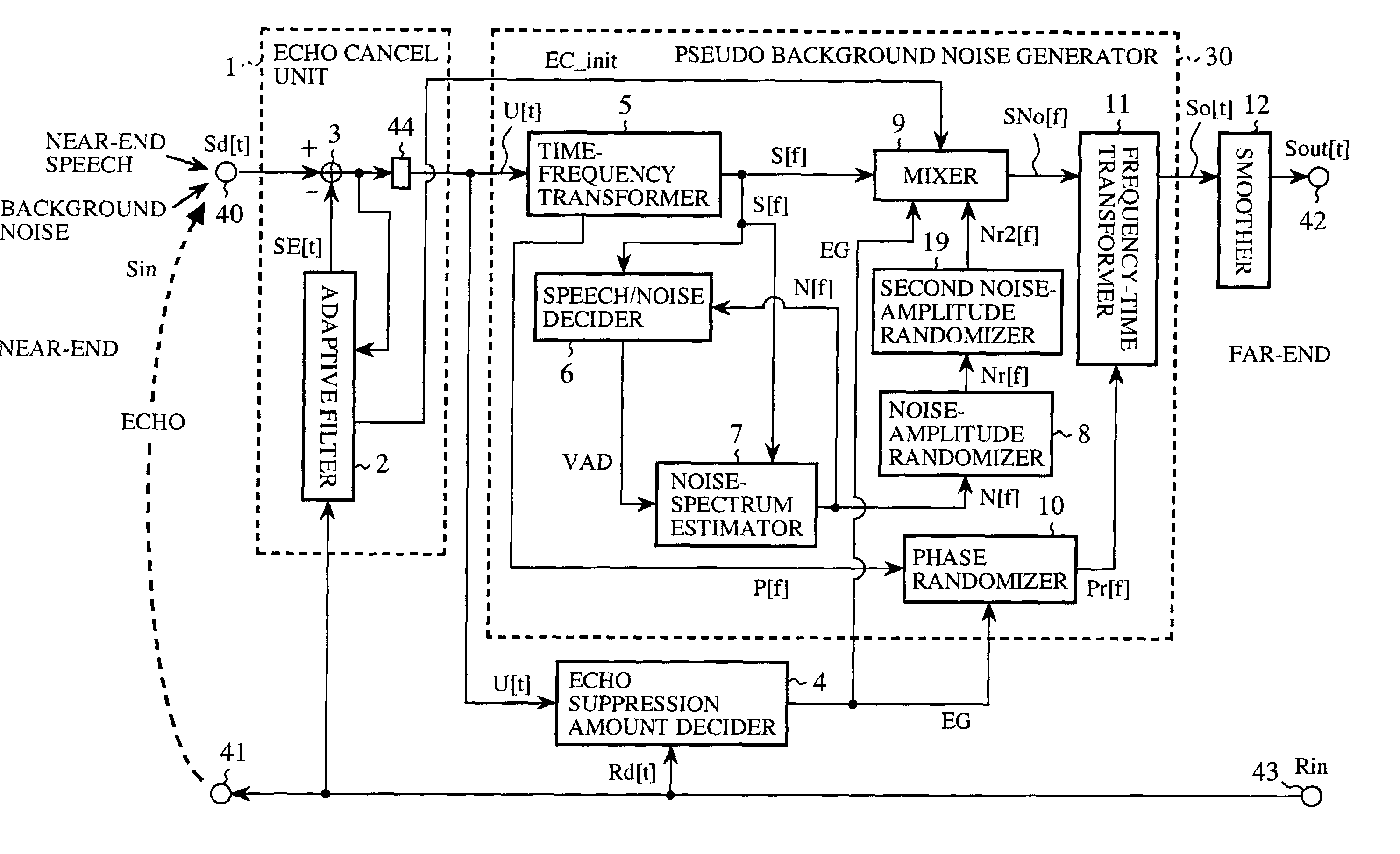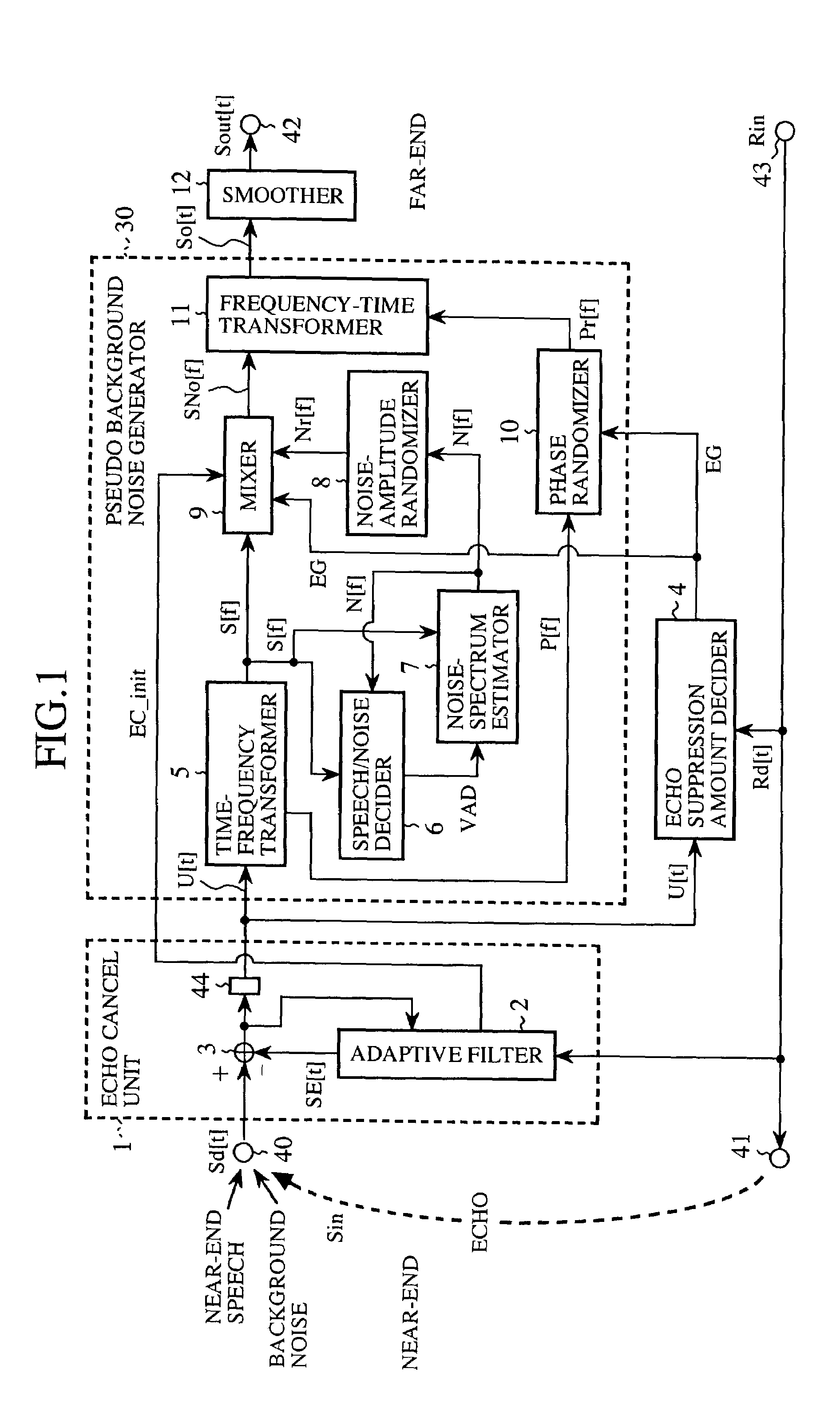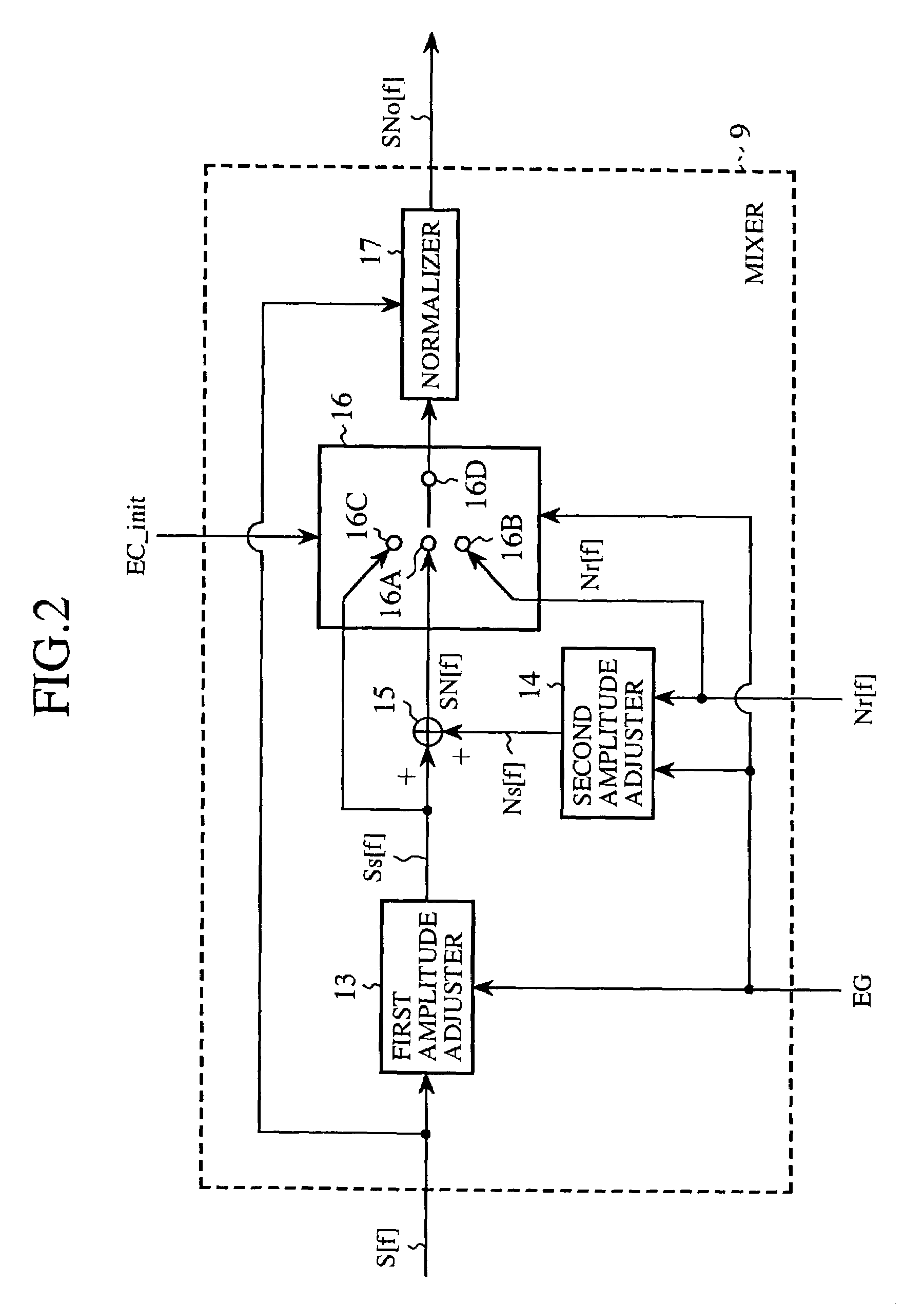Echo processor generating pseudo background noise with high naturalness
a pseudo background noise and processor technology, applied in the field of echo processors, can solve the problems of deteriorating communication quality, accentuating a sense, and affecting the quality of communication, so as to achieve the effect of increasing the degree of randomization of the noise spectrum
- Summary
- Abstract
- Description
- Claims
- Application Information
AI Technical Summary
Benefits of technology
Problems solved by technology
Method used
Image
Examples
first embodiment
[0048]FIG. 1 is a block diagram illustrating the structure of an echo processor according to a first embodiment of the present invention. As shown in FIG. 1, the echo processor includes an echo cancel unit 1, a pseudo background noise generator 30, an echo suppression amount decider 4, a smoother 12, a microphone 40, a speaker 41, a transmission circuit 42, and a reception circuit 43.
[0049]The echo cancel unit 1 includes an adaptive filter 2, a subtracter 3, and a divider 44. The pseudo background noise generator 30 includes a time-frequency transformer 5, a speech / noise decider 6, a noise-spectrum estimator 7, a noise-amplitude randomizer 8, a mixer 9, a phase randomizer 10, and a frequency-time transformer 11.
[0050]The internal structure of the mixer 9 in FIG. 1 is illustrated in FIG. 2. As shown in FIG. 2, the mixer 9 includes a first amplitude adjuster 13, a second amplitude adjuster 14, an adder 15, a selector 16, and a normalizer 17.
[0051]Operations of the echo processor will ...
second embodiment
[0134]In the first embodiment, the phase randomizer 10 randomizes the phase spectrum of the outgoing input signal. Alternatively, a second embodiment of the present embodiment described below randomizes the amplitude of the amplitude spectrum of the outgoing input signal to accomplish a similar advantage.
[0135]FIG. 7 is a block diagram illustrating the structure of an echo processor according to the second embodiment of the present invention. The difference between the structures shown in FIGS. 1 and 7 is that the echo processor in FIG. 7 includes an amplitude randomizer 18 instead of the phase randomizer 10. Other structural elements, which are the same as those in FIG. 1, will not be described in detail.
[0136]Operations of the echo processor will be described next. Differently from the first embodiment, the amplitude spectrum S[f] is supplied from the time-frequency transformer 5 to the amplitude randomizes 18 interposed between the time-frequency transformer 5 and the mixer 9. Th...
third embodiment
[0160]In the first and second embodiments, each spectrum component of the amplitude spectrum S[f] throughout the frequency range between zero and fc is subject to the amplitude suppression of the amplitude spectrum S[f] or the amplitude-randomized amplitude spectrum Sr[f] at the first amplitude adjuster 13 (FIG. 2) and the amplitude suppression of the noise spectrum N[f] at the second amplitude adjuster 14 (FIG. 2). Alternatively, a third embodiment of the present embodiment described below may suppress the amplitude of spectrum components within a part of the entire range, e.g., middle or low frequencies less than 3 kHz.
[0161]When only middle or low frequencies are subject to the amplitude suppression, the echo processor may sufficiently suppresses the amplitude of residual echo, of which the power is strong at only low frequencies for voice components, while avoiding giving a strange suppression feeling at high frequencies.
PUM
 Login to View More
Login to View More Abstract
Description
Claims
Application Information
 Login to View More
Login to View More - R&D
- Intellectual Property
- Life Sciences
- Materials
- Tech Scout
- Unparalleled Data Quality
- Higher Quality Content
- 60% Fewer Hallucinations
Browse by: Latest US Patents, China's latest patents, Technical Efficacy Thesaurus, Application Domain, Technology Topic, Popular Technical Reports.
© 2025 PatSnap. All rights reserved.Legal|Privacy policy|Modern Slavery Act Transparency Statement|Sitemap|About US| Contact US: help@patsnap.com



